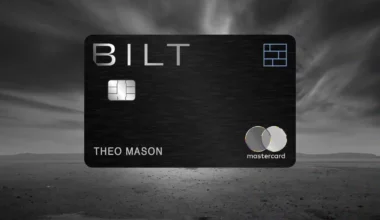In my 28 short years, I’ve found that sweeping generalizations are, generally speaking, rarely true. There are exceptions, however, and here’s one of them: virtually all European credit cards are worse than American credit cards, at least from a rewards perspective. Signup bonuses, spend multipliers, cashback, lounge access, and hotel benefits on European cards are all, by and large, significantly less valuable than the perks granted by their US counterparts.
There are a lot of (mostly incorrect) explanations given for this phenomenon, so, as an American currently living in Europe, I’ve tried to figure out the real reason European credit cards are so unappealing and, if you’ll bear with me through a bit of minutia and history, explain it in this post.
Interchange fees
The reason for poor European credit card rewards comes down to one word: interchange, the fee that vendors are charged every time they accept a card payment. For example, if I spend $10 on fish tacos at a food truck with my American Express, the food truck will receive $9.70, while Amex will get $0.30 in interchange fees.
In theory, credit card companies charge these fees to ensure that card payments work seamlessly for vendors and customers. In reality, the costs of building and maintaining a complex payments infrastructure, though large, are fixed, and the marginal cost for Visa or Mastercard or American Express to process transactions is effectively zero. So instead of using the interchange to cover the cost of processing payments, they typically put the money towards a bigger, variable expense: customer acquisition.
In the US, customer acquisition is expensive because there are lots of credit cards chasing lucrative spenders. While the original perk of the credit card was the ability to buy things you didn’t have the cash on hand to buy, credit cards have had to respond to increasingly fierce customer competition by spending more to attract and retain customers. Since the first multipurpose rewards program was launched by Discover in 1986, the proliferation of perks has been slow but steady.
Today, to entice you to sign up for their card, Chase offers a 60,000 point sign-up bonus on their Saphire Reserve card. In 2010, you could expect 10,000 point sign-up bonuses for similar products. To entice you into spending on the card, Chase offers 5 points per dollar you spend on travel purchased through their travel portal. In 2010, you would’ve earned a fraction of that. And to entice you into keeping the card, you’ll get a $300 annual travel credit, Priority Pass lounge access, an application fee credit for Global Entry or TSA PreCheck, and other perks–none of which you would’ve received in years past.
I’m mentioning all this to illustrate how high interchange fees in the US have led to virtuous cycle in which credit card awards continually improve:
- CC companies have extra cash on hand because of interchange fees
- CC companies put the money back into rewards to attract customers
- Customers gravitate towards the cards with the best rewards
- Other CC companies take notice and improve their rewards, attracting customers and earning more interchange
- Rinse and repeat
Why interchange in Europe is too low for good credit card rewards
In Europe, none of this happens, because the essential ingredient that kicks off the whole process–interchange fees–is mostly missing. I use the word “mostly” here because credit card companies in Europe do charge some interchange, but it’s a fraction of what companies charge vendors in the US due to the 2015 EU regulation 751 that capped interchange on consumer credit cards at 0.30%. Even before the 2015 rule came into effect, fees in Europe were still much lower than that in the US, with the weighted average of interchange across Europe around 0.65% for debit and credit card transactions.
It’s no surprise, then, that 83% of Americans use credit cards, compared to just 40% of Europeans—after all, why would anyone bother using credit cards when a debit card, which is easier to get, is nearly identical? And this European disinterest in credit cards shows no signs of changing. Even as Europeans transact less and less with cash, credit cards are falling behind debit cards, and even Buy Now Pay Later options, as the preferred means of payment.

Is capping interchange good or bad?
As someone who lives in Europe and devotes a lot of time and energy to maximizing credit card rewards, I’d obviously prefer higher interchange, at least for the sake of my hobby. Thinking more altruistically though, I’m not sure that high interchange fees are necessarily a good thing, though I’m also not sure they’re all that bad either. Most likely, the macro-level impact of capped versus uncapped interchange is probably insubstantial.
In the US, for example, interchange fees are mostly passed back to consumers in the form of awards and card benefits–effectively a cash transfer from vendors to cardholders, where vendors pay credit card companies who in turn pay consumers in the form of rewards (though it’s worth mentioning that vendors can also pass interchange costs on to consumers by raising prices). Compare this situation to the status quo in Europe, where businesses, all the way from Ikea to mom-and-pop establishments pay less money to swipe credit cards, but consumers don’t benefit from credit card rewards, and I think it’s ambiguous as to which system works better.
On the one hand, I could see proponents of the European status quo arguing that credit cards are primarily used by wealthier consumers, so high interchange fees punish poorer consumers and reward richer consumers because vendors cover interchange fees by raising prices for all their customers, even though only the relatively wealthy cardholding customers benefit from credit card perks. These proponents might also argue that allowing easy access to credit cards means more consumers, especially poorer ones, are tempted to take on high-interest debt to purchase things they can’t afford.
A proponent of the US system might respond that credit card penetration rates are so high in the US that most consumers, rich and poor, benefit in some way from credit card benefits. On top of that, credit cards are a way for those without access to credit, overwhelmingly low-income populations, to build a credit history and more easily access lower interest forms of debt like mortgages. They also might say that Buy Now Pay Later is far more popular in Europe than in the US, and so the risk that low-income consumers may take on high-interest debt already exists (and that BNPL users don’t even get rewarded with points to boot).
Final thoughts
European Union-mandated caps on interchange fees mean that European consumers don’t have access to the rich credit card benefits that Americans take for granted. As a points junkie living in Europe, it’s a bit of a bummer, though I understand the rationale for capping interchange. Unless this cap is eliminated, I’ll expect, at least for the foreseeable future, weak awards on European credit cards and further growth in debit card and Buy Now Pay Later use.





6 comments
It’s a compelling argument but I have a different argument explains more. Not only does Europe have lower credit card rewards but they have higher prices, non-free public toilets, no refills on sodas, non-existent customer service, fewer and ungenerous return policies compared the U.S. I explain the lower credit card rewards plus these other economic behaviors as the European companies try to extract as much profit per customer per transaction while American companies play the long game of taking lower profit per customer per transaction but increasing the number of customers and the number of transactions (“We lose money on every sale but we make it up in volume!” as the old joke goes). European credit card companies see credit card rewards as per-transaction profit reducers so they are stingy with them.
Interesting, I haven’t heard this angle before but it makes sense!
Great article!
As a Swiss financial planner working in the US I wanted to comment on the part about the advantages of the U.S system and well as much as I love my credit card rewards now there’s quite a lot of research showing that credit card rewards program are a net detriment to most credit card holder (outside of the top 10-20% of spenders) who end up subsidizing the lifestyle of wealthier Americans unfortunately. As for credit cards being a stepping stone to good credit and other forms of affordable credit, it’s a valid point for the U.S but that would be the case with or without reward programs and with a system more similar to the European one bad credit spending habits would be less incentivized. It’s also not an argument that translates very well overseas as credit scores typically aren’t a thing in Europe (Spain and the U.K are an exception but still work differently than in the U.S or Canada) and other forms of credit are widely available based on income (mostly) independently of any credit history.
Just a few points I thought could add to the discussion! Both systems are good imo but they do incentivize different things and the European one might be a bit more egalitarian (as some other things are).
All great points! Though I love credit card rewards, I have to agree that many of their benefits accrue to a small proportion of customers.
What happens when you use an American credit card in Europe? The credit card still pays me 2% and claims to have no foreign transaction fees but the merchant only pays them .3%?
Great question! I had to do some research on this one. I’m not 100% sure, but I believe that European merchants would still pay the higher interchange. I think that’s the case because if you look at Stripe’s pricing page for European merchants, they quote a much lower rate for European cards and a much higher rate for international cards.